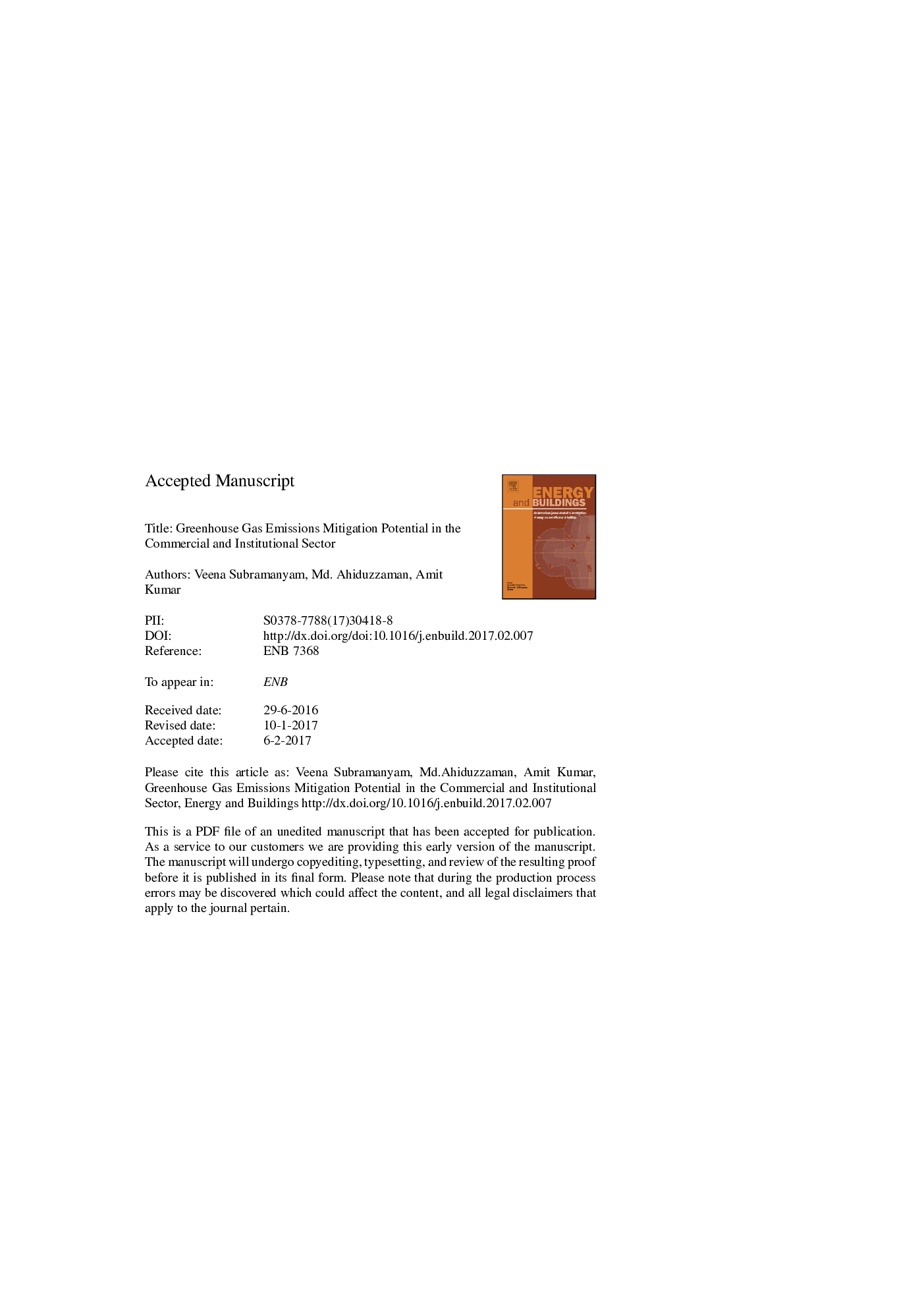| Article ID | Journal | Published Year | Pages | File Type |
|---|---|---|---|---|
| 4919273 | Energy and Buildings | 2017 | 34 Pages |
Abstract
This study was conducted to identify energy efficiency improvement options and assess these opportunities in terms of potential of energy savings and greenhouse gas (GHG) mitigation for the commercial and institutional sector. In addition, associated GHG abatement cost (GHGAC) curves were developed. A western Canadian province, Alberta, was selected for a case study. A model was developed in the Long-range Energy Alternatives Planning system (LEAP) with 23 energy efficiency improvement scenarios associated with space heating and cooling, lighting, auxiliary equipment, and water heating in the commercial and institutional sector. The scenarios analyzed in this study quantified the reduced demand in energy use and GHG emissions as well as the abatement costs for fast (2013-2030) and slow (2013-2050) penetration periods. Ground source heat pumps (GSHPs) and efficient boilers for space heating, efficient lighting, and high-insulation in building envelopes are identified as having significant potential for GHG mitigation and have low abatement costs. A cumulative GHG mitigation of 28Â Mt and 55Â Mt is achievable in the fast and slow penetration scenarios in the sector, respectively.
Keywords
VSDU.S.CSECFLNRCCFRGHGN2OCH4LEAPNEBGSHPLEAP modelNational Energy BoardAESOnet present valueGHG emissionsNitrous oxideUnited StatesCommercial sectorEnergy efficiencymetric tonneCanadian dollarCarbon dioxideVariable speed driveLong-range Energy Alternatives Planning Systemcapital recovery factorMethaneequivalentEq.NPV یا negative predictive valuepetajouleground source heat pumpCO2kilowatt hourkWhNatural gasGreenhouse gasgigajoule
Related Topics
Physical Sciences and Engineering
Energy
Renewable Energy, Sustainability and the Environment
Authors
Veena Subramanyam, Md. Ahiduzzaman, Amit Kumar,
